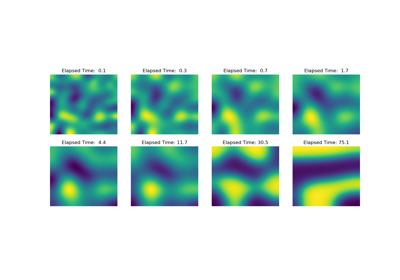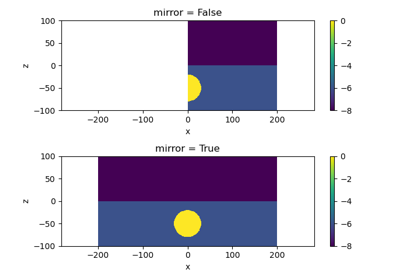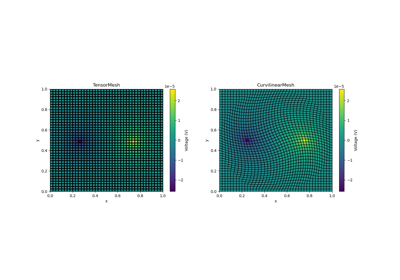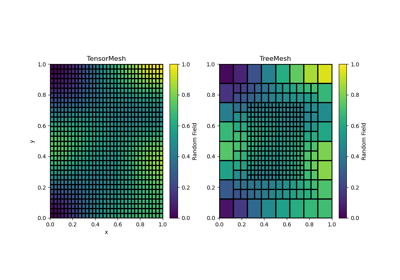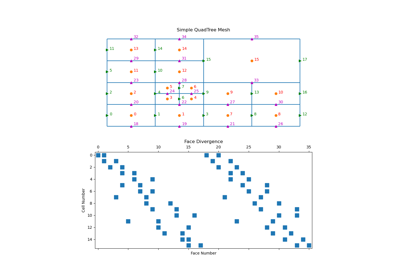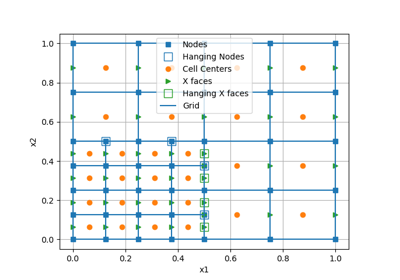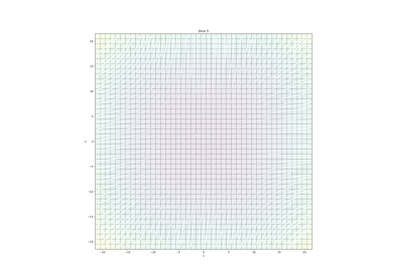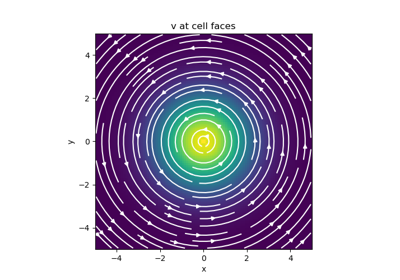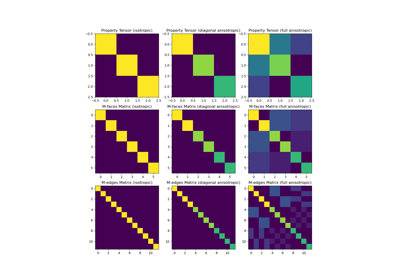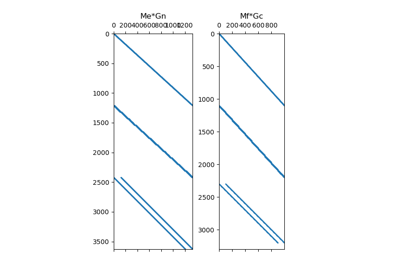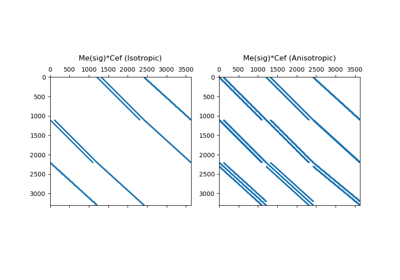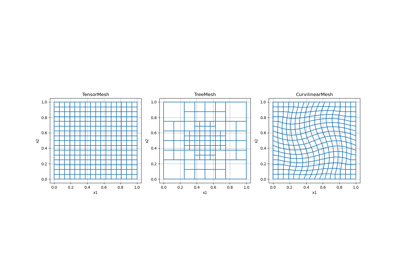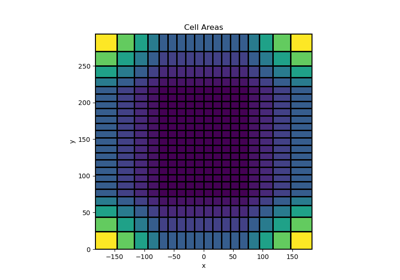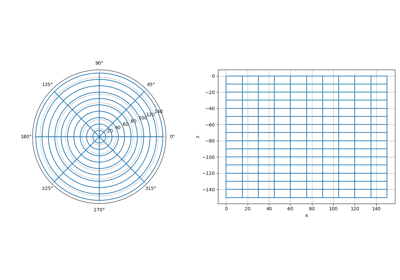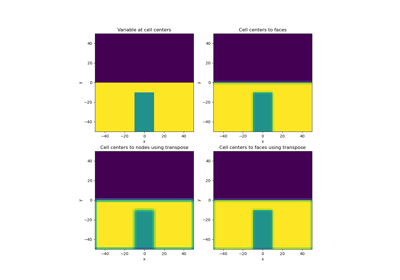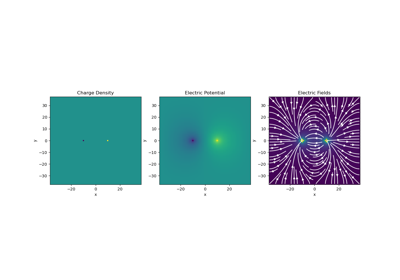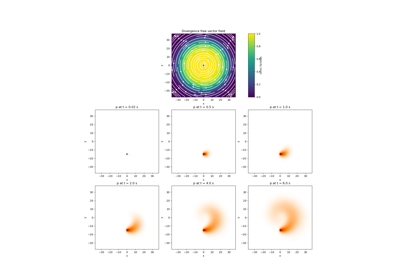discretize.base.BaseTensorMesh#

- class discretize.base.BaseTensorMesh(h, origin=None, **kwargs)[source]#
Base class for tensor-product style meshes.
This class contains properites and methods that are common to Cartesian and cylindrical meshes. That is, meshes whose cell centers, nodes, faces and edges can be constructed with tensor-products of vectors.
Do not use this class directly! Practical tensor meshes supported in discretize will inherit this class; i.e.
discretize.TensorMeshandCylindricalMesh. Inherit this class if you plan to develop a new tensor-style mesh class (e.g. a spherical mesh).- Parameters:
- h(
dim) iterableofint,numpy.ndarray,ortuple Defines the cell widths along each axis. The length of the iterable object is equal to the dimension of the mesh (1, 2 or 3). For a 3D mesh, the list would have the form [hx, hy, hz] .
Along each axis, the user has 3 choices for defining the cells widths:
int-> A unit interval is equally discretized into N cells.numpy.ndarray-> The widths are explicity given for each cellthe widths are defined as a
listoftupleof the form (dh, nc, [npad]) where dh is the cell width, nc is the number of cells, and npad (optional) is a padding factor denoting exponential increase/decrease in the cell width for each cell; e.g. [(2., 10, -1.3), (2., 50), (2., 10, 1.3)]
- origin(
dim) iterable, default: 0 Define the origin or ‘anchor point’ of the mesh; i.e. the bottom-left-frontmost corner. By default, the mesh is anchored such that its origin is at
[0, 0, 0].For each dimension (x, y or z), The user may set the origin 2 ways:
a
scalarwhich explicitly defines origin along that dimension.{‘0’, ‘C’, ‘N’} a
strspecifying whether the zero coordinate along each axis is the first node location (‘0’), in the center (‘C’) or the last node location (‘N’).
- h(
Attributes
Boundary edge locations.
Outward normal vectors of boundary faces.
Boundary face locations.
Boundary node locations.
Return gridded cell center locations.
Return x-coordinates of the cell centers along the x-direction.
Return y-coordinates of the cell centers along the y-direction.
Return z-coordinates of the cell centers along the z-direction.
Gridded edge locations.
Gridded x-edge locations.
Gridded y-edge locations.
Gridded z-edge locations.
Gridded face locations.
Gridded x-face locations.
Gridded y-face locations.
Gridded z-face locations.
Cell widths along each axis direction.
Return dimensions of all mesh cells as staggered grid.
Width of cells in the x direction.
Width of cells in the y direction.
Width of cells in the z direction.
Return gridded node locations.
Return x-coordinates of the nodes along the x-direction.
Return y-coordinates of the nodes along the y-direction.
Return z-coordinates of the nodes along the z-direction.
Origin or 'anchor point' of the mesh.
vectorCCx has been deprecated.
vectorCCy has been deprecated.
vectorCCz has been deprecated.
vectorNx has been deprecated.
vectorNy has been deprecated.
vectorNz has been deprecated.
Methods
getTensor(*args, **kwargs)getTensor has been removed.
get_interpolation_matrix(loc[, ...])Construct a linear interpolation matrix from mesh.
get_tensor(key)Return the base 1D arrays for a specified mesh tensor.
isInside(*args, **kwargs)isInside has been removed.
is_inside(pts[, location_type])Determine which points lie within the mesh.
See also
utils.unpack_widthsThe function used to expand a
listortupleto generate widths.

